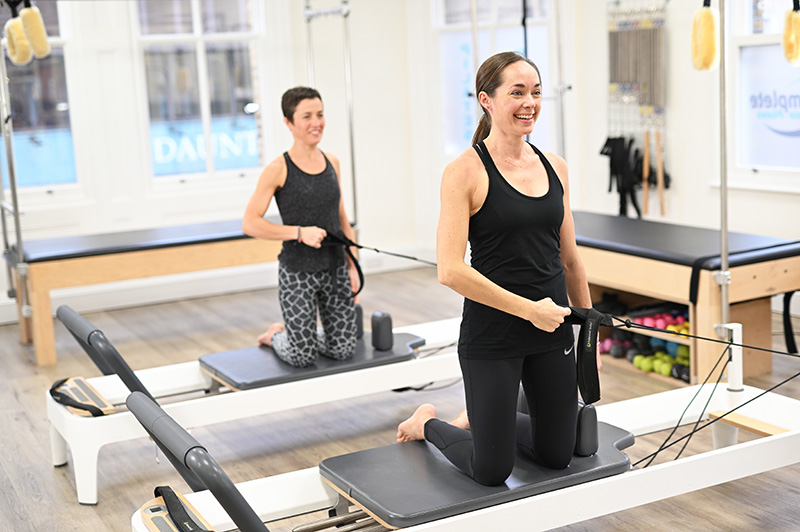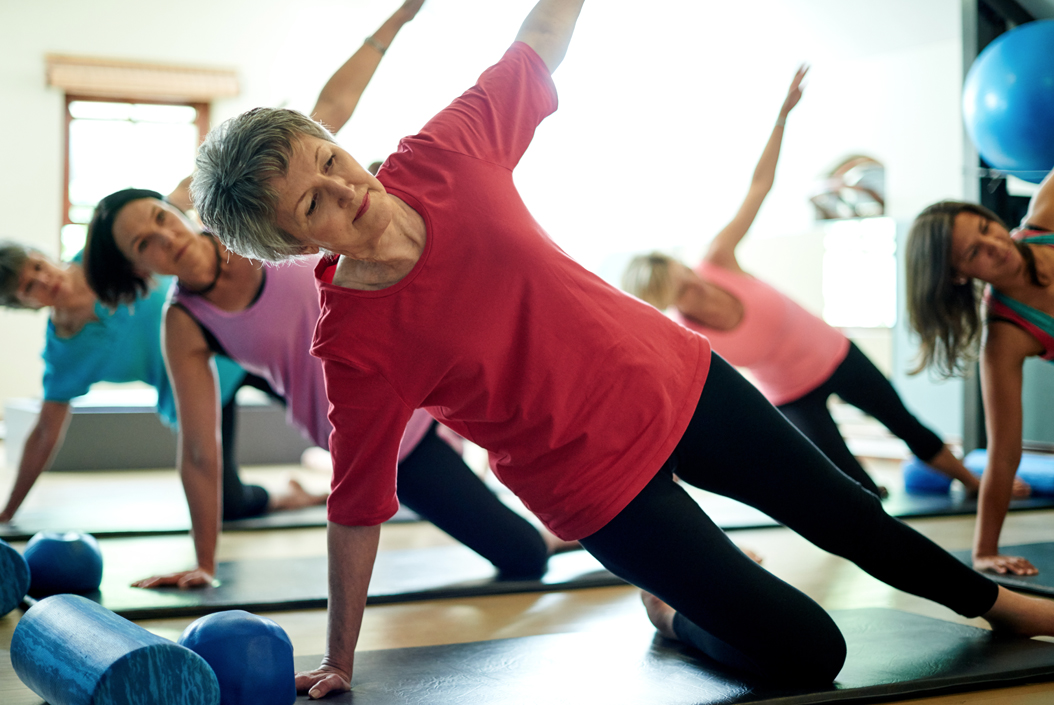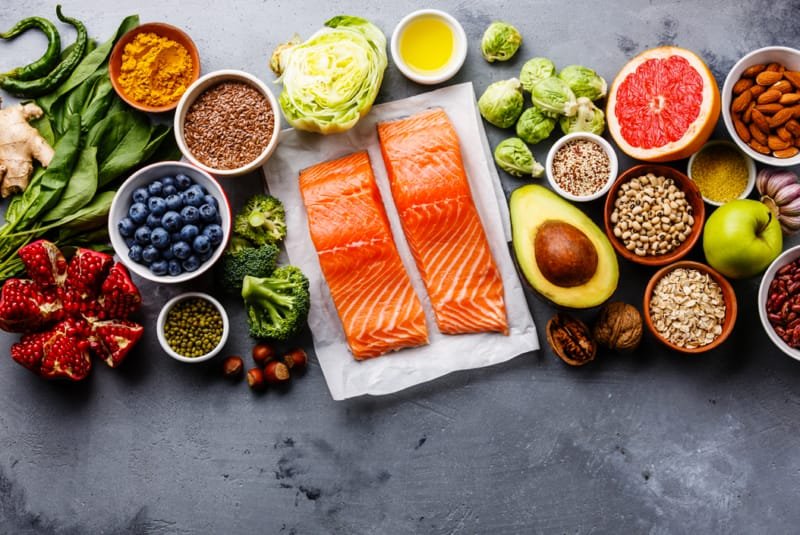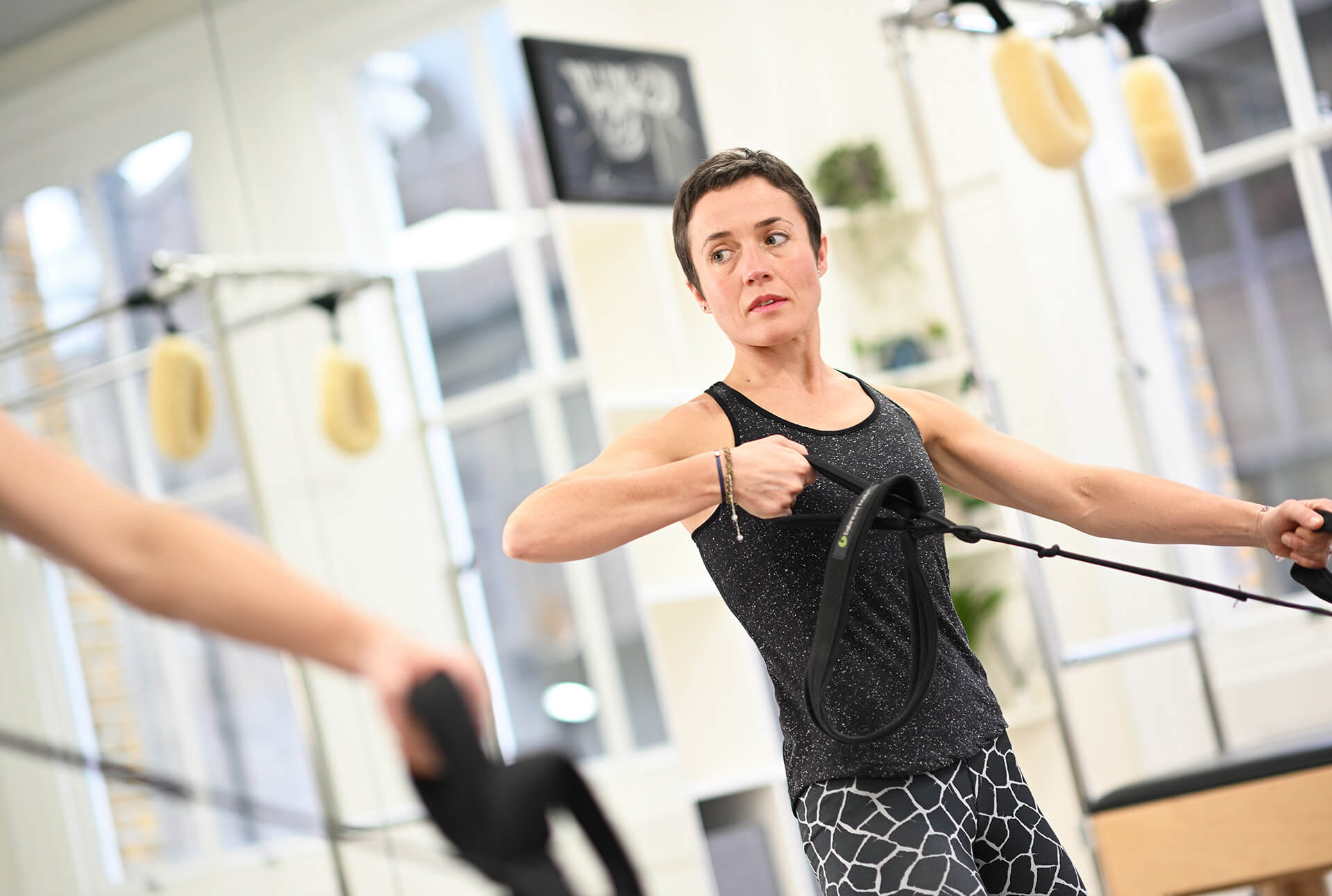World Osteoporosis Day
It’s just around the corner. And in honour of it, Complete Pilates will be publishing a series of blogs about the importance of bone health.
First in our series is this post from Physiotherapist, Clinical Pilates teacher and our head of business development, Ruth Smith.
Osteoporosis is a major worldwide health issue. In this country, 1 in 3 women and 1 in 5 men over the age of 50 will suffer an osteoporotic break of a bone. These breaks can be life-threatening and a major cause of pain and disability, particularly as we get older.
But few people understand the extent of the health threat that osteoporosis poses. So, we’ve committed to tell more people about bone health by taking this pledge: https://theros.org.uk/get-involved/take-the-pledge/
Find out more about why you too should take the pledge by reading on. Below you’ll discover all about osteoporosis, how to keep your bones healthy and what professionals like us can do to support this aspect of your health.
Take action now, whatever your age!
Strong bones and muscles can help to prevent breaks and help you remain mobile and active as you age. This is an important factor in maintaining quality of life. For women over the age of 45, osteoporosis accounts for more days in hospital than many other diseases such as breast cancer, diabetes and heart attacks. When it comes to major breaks such as a broken hip, there is a very high incidence of loss of physical independence and need for care input at home.
Exercise for strong bones
However, you can prevent osteoporosis and broken bones. A bone-healthy lifestyle can help to prevent breaks, and this can be started at any age. Taking regular exercise that loads your bones such as walking, dancing or tennis etc. helps to increase bone strength. In fact, the best time to start this is age 11 when our bones are building up most of their density! So, have the conversation with the pre-teens in your life!
Muscle strength and good balance are vital in supporting your bones and ensuring you reduce the risk of falls. Falls account for the majority of broken bones. This means that if you can help to prevent falls, you can help to prevent breaks – simple!
A good diet is essential for bone health
Alongside exercise, a bone-healthy diet is vital to keep bones strong and healthy. So, ensure you include plenty of calcium, protein and vitamin D alongside other bone-health nutrients in your diet. It’s also important to avoid excessive alcohol, caffeine, carbonated drinks and smoking because these can all damage bone health.
The International Osteoporosis Foundation Campaign gives these 5 steps to healthy bones and a fracture-free future:
- Exercise regularly.
- Ensure a diet rich in bone-healthy nutrients.
- Avoid negative lifestyle habits.
- Find out whether you have risk factors.
- Get tested and treated if needed.
Risk factors: make sure you know the risk factors for osteoporosis and fractures.
Some you can’t change such as:
- Gender
- Age
- Ethnicity
- Family history
- Certain medical disorders
- Certain medications
However, there are a lot that you can change:
- Smoking
- Insufficient exercise
- Excessive alcohol consumption
- Low body mass index
- Poor nutrition
- Vitamin D deficiency
- Frequent falls
Take this ‘are you at risk?’ questionnaire on the National Osteoporosis society now.

How can Physiotherapy and Clinical Pilates help?
Physiotherapists and Clinical Pilates Instructors are able to discuss your risk factors with you, and assess your muscle strength, mobility and balance. We will look at your current exercise profile. Then, using our assessment findings, we will put together an effective and safe exercise programme focusing on bone health.
These programmes will usually focus on strengthening the anti-gravity muscles – the calves, glutes, spinal extensors and triceps in the upper body. These muscles help to keep your body upright by maintaining good posture and supporting your bones. Hunched spines for people with osteoporosis are more likely to suffer breaks and reduce your quality of life. This makes exercising to maintain posture and a well-aligned spine vital.
Clinical Pilates is an also effective in this respect. This is because it is a form of exercise known for maintaining good posture and strengthening the supportive muscles around your spine and hips. As a low-impact form of exercise, it is also complements strength training or impact sports to create a balanced workout.
For those suffering with an osteoporotic bone break, Physiotherapy and Pilates together can be effective for symptom relief. A combination of these two methods will also help rehabilitate you so that you can return to full activity levels.
Related reading: The benefits of Pilates for seniors
Want to know more about osteoporosis?
If you have concerns about osteoporosis, talk to a Clinical Pilates instructor. Our team at Complete Pilates are all trained to safely treat clients with concerns regarding their bone health. We can create manageable, appropriate, on-going exercise plans to keep you healthy and fracture-free. We are also able to refer you to other specialist partners if we feel you are at higher risk and need further investigations or medical input.
- You can also complete an easy online fracture risk assessment at https://www.sheffield.ac.uk/FRAX/
- You can find out more about osteoporosis at www.nos.org.uk or www.iofbonehealth.org
Look out for our upcoming blogs on how to exercise for bone health! If you are worried about a diagnosis of osteoporosis and want to talk to someone just get in touch. Otherwise book today to see how we can help you on your exercise journey.
Education is key:
These blogs are designed to give information to everyone, however, it is important to remember that everyone is different! If you have not seen one of our therapists and have any questions about injuries, what you have read or whether this may be useful to you, please just ask. We are more than happy to help anyone and point you in the right direction. Our biggest belief is that education is key. The more you understand about your injury, illness and movement, the more you are likely to improve.





